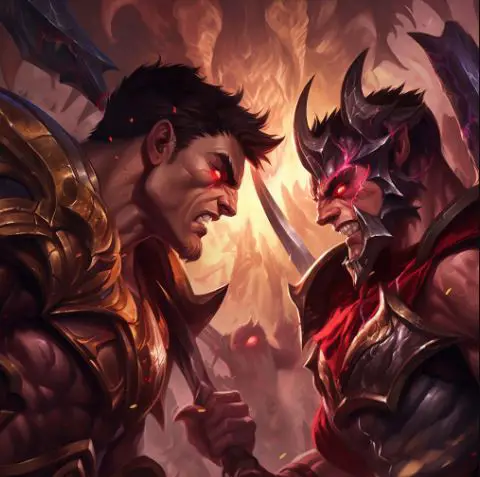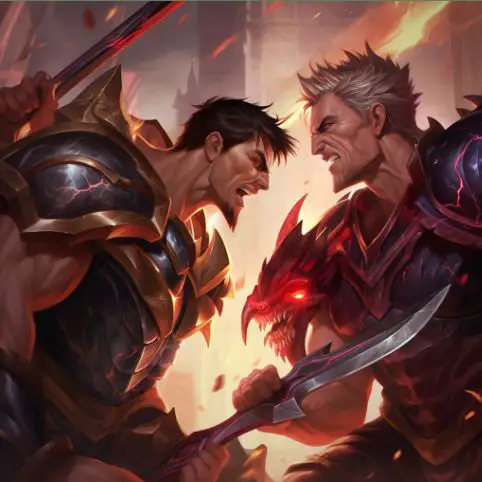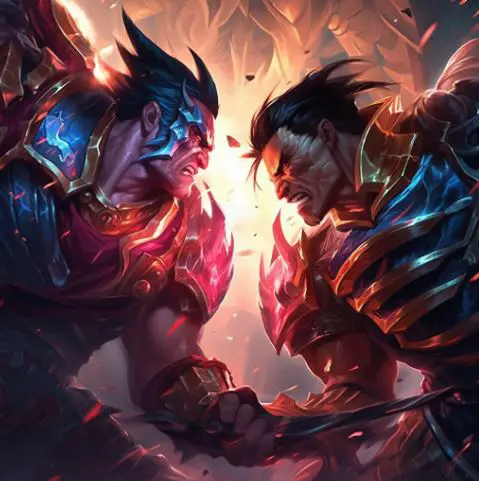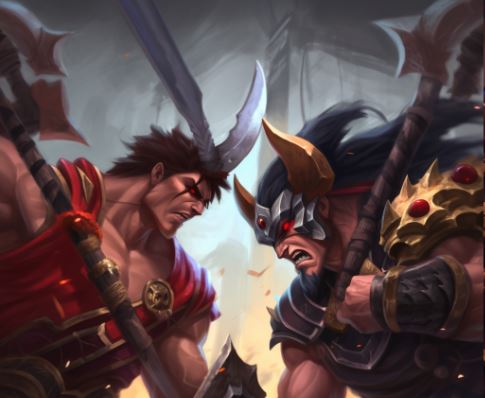
The Issue of Toxicity in Online Gaming
Have you ever been excited about a multiplayer gaming session, only to have it ruined by toxic players? Isn’t it infuriating? Now imagine this scenario in the high-stakes world of League of Legends (LoL), one of the most popular online multiplayer games. This article dives into whether Riot Games, the company behind LoL, does enough to combat this toxicity.
Understanding Toxicity in League of Legends: An Expert’s Insight
As we dive deeper into the world of League of Legends, we find ourselves tackling an issue that has been the bane of many players’ experiences: toxicity. To combat this issue effectively, we first need to truly understand what we’re dealing with.
Defining Toxicity: More Than Just Bad Manners
Toxicity in gaming isn’t merely about bad manners or occasional fits of anger. It’s a much more pervasive issue that goes beyond a few heated words.
In the context of League of Legends, toxicity typically involves disruptive, offensive, or harmful behavior that negatively impacts the gaming environment. But let’s break that down further, shall we?
- Flaming: This refers to hostile and insulting interactions between players. Ever had a teammate berate you for a mistake during a match? That’s flaming.
- Trolling: This is when a player intentionally acts to provoke or upset others. It could be as simple as spamming the chat with nonsense, or as aggravating as deliberately sabotaging the game.
- Intentional Feeding: In League of Legends, this term describes the act of deliberately dying to the enemy team to give them an advantage. It’s a clear form of game sabotage and is highly frustrating for teammates.
- Inappropriate Language: This involves the use of offensive, obscene, or discriminatory language. It’s the equivalent of verbal abuse in the gaming world.
Effects of Toxicity on Players: The Hidden Toll
The impact of toxicity extends far beyond the gaming screen, often leaving lasting effects on players.
Mental Stress: Constant exposure to toxic behavior can lead to increased mental stress. Imagine logging in for a relaxing game, only to be met with a barrage of insults. Over time, this could lead to anxiety, mood swings, and even symptoms of depression.
Decreased Performance: Toxicity creates a hostile environment that can affect a player’s performance. The stress and distraction caused by a toxic player often result in reduced focus and efficiency during gameplay.
Player Attrition: In extreme cases, toxicity can drive players away from the game entirely. It’s not uncommon to hear stories of players quitting League of Legends due to the toxic behavior of others. This not only affects the individual players but also the overall health of the game’s community.
Toxicity in League of Legends is a multi-faceted issue with significant implications. It’s not just about hurt feelings; it’s about the overall health and survival of the game’s vibrant community. Understanding this is the first step towards creating a more positive and enjoyable gaming environment for everyone.
Digging Deeper: The Underlying Causes of Toxicity in League of Legends


As we venture further into the complex ecosystem of League of Legends, it’s essential to understand the root causes behind toxicity. After all, prevention is the best cure. So, let’s don our detective hats and delve into the heart of the matter, shall we?
As we journey into the heart of the League of Legends universe, we face a daunting task: unraveling the causes behind the pervasive toxicity within its digital realms. This task is crucial, for as the wise saying goes, “an ounce of prevention is worth a pound of cure”. So, with that in mind, let’s put on our detective glasses, ready our analytical minds, and delve deeper into the complex web that forms the root of toxicity, shall we?
The Unrelenting Competitive Spirit
At its core, League of Legends is a highly competitive game. It’s a battlefield where two teams clash head-on, each fighting tooth and nail to seize victory from the other’s grasp. This intense competitive spirit, while a significant driving factor for the game’s appeal, can also fan the flames of a high-stress environment.
Imagine the scenario: You’re on the brink of victory, adrenaline coursing through your veins, only for a teammate’s minor slip-up to shatter your imminent triumph. This frustration, multiplied across countless games, can lead to outbursts of anger and toxic behavior, souring the game’s atmosphere.
The Double-Edged Sword of Anonymity and the Online Disinhibition Effect
The world of online gaming is a realm of masks. Behind their avatars and usernames, individuals often feel an increased sense of anonymity. This anonymity, while providing a layer of privacy, can sometimes lead to individuals feeling less accountable for their actions and words.
This phenomenon, known to psychologists as the ‘online disinhibition effect,’ can result in players adopting more aggressive and less inhibited behavior than they would in face-to-face interactions. The repercussions of this effect are felt profoundly in the League of Legends community, contributing significantly to the toxicity levels.
The Gap in Immediate Consequences
One of the critical gaps in combating toxicity in League of Legends lies in the lack of immediate consequences for toxic behavior. Riot Games has implemented systems to punish toxic players, but these penalties often come into effect after the game ends.
This delay allows toxic players to continue their disruptive behavior throughout a game largely unhindered, thereby fostering an environment that might inadvertently encourage such behavior. The absence of immediate repercussions can sometimes send a message of impunity, fueling the cycle of toxicity.
The Melting Pot: Social and Cultural Differences
League of Legends has a vast player base that spans the globe, creating a melting pot of different social and cultural backgrounds. While this diversity enriches the game, it can also sow the seeds of misunderstanding and perceived toxicity.
Communication styles, societal norms, humor – these vary widely across different cultures. What one player views as friendly banter, another might perceive as offensive, leading to unintended friction and contributing to the perceived toxicity.
Weaving Together the Threads: The Complex Web of Causes
In conclusion, the causes of toxicity in League of Legends are as multifaceted as the game itself, intricately woven together like threads in a tapestry. From the game’s intensely competitive nature to the diversity of its player base, each aspect contributes to the overall issue.
Understanding these underlying causes is a vital first step for Riot Games and the gaming community at large in developing more effective strategies to combat toxicity. To truly tackle a problem, we must first understand its roots. And with that understanding, we can start to make the gaming world a better place, one step at a time.
The Role of Riot Games


Navigating the landscape of League of Legends wouldn’t be complete without discussing the pivotal role of its creator and overseer, Riot Games. The American video game publisher, revered for the creation of League of Legends, holds a unique responsibility in ensuring the safety and enjoyment of its vast player base.
Riot Games: The Steward of the League
Riot Games isn’t just a video game publisher; it’s the architect of a world that has captivated millions. With League of Legends under its belt, Riot Games has shaped a universe where strategy, skill, and a dash of creativity come alive, all while fostering a global community of dedicated gamers.
However, with great power comes great responsibility. And in this case, the responsibility lies in ensuring that the immersive gaming environment is safe, enjoyable, and free from the clutches of toxicity.
Riot Games and the Battle against Toxicity
Riot Games is not just the silent guardian watching from the sidelines. It plays an active role in combating toxicity, becoming the referee and, when needed, the enforcer within the League of Legends community. So, what are the strategies Riot Games employs in this ongoing battle?
Riot Games’ Arsenal against Toxicity
The fight against toxicity is no small feat, but Riot Games has armed itself with a variety of tools and measures to tackle the issue head-on.
The Voice of the Players: In-Game Reporting System
Riot Games understands the importance of the players’ voice in combating toxicity. They’ve implemented an in-game reporting system where players can flag toxic behavior. Think of it as the citizens’ hotline, a tool for players to alert the authorities about disruptive behavior within the game.
The Hammer of Justice: Punitive Measures for Toxic Players
Riot Games doesn’t just stop at listening; they act. They’ve put in place a range of punitive measures to keep toxic players in check. These measures include warnings for first-time offenders, chat restrictions for those who misuse the communication channels, and, in severe cases, even permanent bans. It’s a clear message: toxic behavior won’t be tolerated.
The Watchful Eye: Automated Systems for Detection
But Riot Games isn’t solely reliant on player reports. They’ve developed sophisticated automated systems that can detect toxic behavior, even without player reports. It’s like a vigilant guardian, keeping an eye out for toxicity 24/7.
In conclusion, Riot Games is not just a bystander in the fight against toxicity. It plays a central role in shaping the culture within League of Legends by providing tools for reporting toxicity, implementing strict punitive measures, and employing advanced technology to detect and combat toxic behavior.
The Verdict: Community Reactions to Riot Games’ Efforts
The effectiveness of Riot Games’ strategies in combatting toxicity is ultimately gauged by its impact on the community. The League of Legends community, being the receiving end of these measures, has expressed a range of responses to Riot Games’ endeavors. Let’s explore this mixed bag of reviews to gain a better understanding of the situation.
Applause for Riot: Positive Feedback on Efforts
Many in the community applaud Riot Games for their proactive approach to dealing with toxicity. These players appreciate Riot’s efforts, acknowledging the visible decrease in toxic language and flaming in their matches. They commend the implementation of the in-game reporting system, viewing it as a critical tool in empowering players to stand against disruptive behavior. The automated systems for detection, too, are praised for their effectiveness in picking up even subtle signs of toxicity.
Raising Eyebrows: Criticisms of Riot Games’ Measures
However, it’s not all roses. There’s a segment of the community that raises concerns, arguing that Riot Games’ measures might be missing the mark. The critique is not so much about the measures’ existence but rather their focus.
These players contend that Riot Games’ focus seems to be predominantly on reducing toxic language and flaming. While these efforts are appreciated, the community points out that there’s more to toxicity than just harmful language. The issues of trolling and intentional feeding, they argue, are equally, if not more, destructive to the gaming experience.
Trolling, the act of deliberately acting in a manner to provoke or disrupt the game, and intentional feeding, where a player deliberately dies to the enemy to sabotage their own team, are both forms of toxicity that can turn a game sour in minutes. These actions can lead to an unbalanced game and a frustrating experience for the players affected.
While Riot Games has made strides in curtailing abusive language, the community feels that more attention should be given to these other forms of toxicity. They argue for a more holistic approach, one that tackles all aspects of toxicity and not just the language used.
In Conclusion: A Call for a Broader Focus
In essence, while Riot Games has been proactive in tackling toxicity, there’s room for improvement. The community’s reaction suggests a desire for a broader focus, one that extends beyond toxic language and flaming to also address trolling and intentional feeding. By doing so, Riot Games can potentially create a more comprehensive strategy to combat toxicity and create a more enjoyable environment for all League of Legends players.
Beyond the Rift: Comparisons with Other Gaming Companies
Toxicity isn’t unique to League of Legends. It’s a widespread issue that plagues the online gaming industry. Therefore, it can be enlightening to look beyond the confines of Riot Games and examine how other gaming companies are dealing with similar challenges. After all, sometimes the key to solving a problem lies in learning from others.
Against the Same Foe: Efforts by Other Gaming Companies
Several gaming giants, like Valve and Blizzard, are no strangers to the battle against toxicity. They’ve each implemented their own measures to foster a safer and more enjoyable gaming environment.
Valve, for instance, has established a comprehensive reporting system in games like Dota 2 and Counter-Strike: Global Offensive. They also utilize an innovative behavior score that rates players based on their in-game conduct.
Meanwhile, Blizzard has implemented strict penalties for toxic behavior in games like Overwatch and World of Warcraft. They even went a step further with the introduction of the “Avoid as Teammate” feature in Overwatch, allowing players to have a say in who they want to avoid in their future matches.
Learning from Peers: Lessons for Riot Games
When it comes to combating toxicity, there is no one-size-fits-all solution. However, seeing how other companies tackle this issue might provide Riot Games with fresh perspectives and innovative ideas.
Valve’s behavior score, for instance, could inspire a similar system in League of Legends where positive behavior is rewarded and encouraged, thus creating a more positive gaming environment.
Blizzard’s “Avoid as Teammate” feature, on the other hand, could offer players more control over their gaming experience, potentially reducing instances of team-based toxicity.
The Road to Improvement is Paved with Learning
The fight against toxicity is a collective effort by the entire gaming industry. By learning from the successes and shortcomings of other gaming companies, Riot Games can continue to improve and refine their approach. It’s a continuous journey of learning and adapting, all with the goal of creating a gaming experience that everyone can enjoy.
Towards a Brighter Future: Possible Solutions and Innovations


While Riot Games has made significant strides in addressing toxicity, it’s clear that the journey is far from over. So, what does the road ahead look like? What innovative solutions could further improve the gaming environment in League of Legends? Let’s explore some promising possibilities that could guide us towards a less toxic future.
Sharper Tools: Enhanced Reporting Mechanisms
The in-game reporting system is a powerful tool in the hands of the players, allowing them to flag toxic behavior when they encounter it. However, there’s always room for improvement. One potential solution could be further enhancing these reporting mechanisms, making them more efficient and user-friendly.
This could involve refining the categories for reporting, enabling players to provide more specific information about the incident. The system could also incorporate features allowing players to attach screenshots or brief recordings as evidence, making it easier for Riot Games to verify and address the reported incidents.
Unity in Diversity: Community Building Initiatives
Another promising avenue lies in strengthening the community. After all, a united community is often the best deterrent against toxicity. Riot Games could invest more in community-building initiatives, promoting a culture of respect, sportsmanship, and inclusivity.
This could take the form of events, campaigns, or even contests that encourage positive behavior. For instance, Riot could introduce a “sportsmanship of the month” award, recognizing and rewarding players who exhibit exemplary behavior. Such initiatives would not only deter toxicity but also foster a sense of camaraderie among players.
Fair Play: Statistical Ranked Play Adjustments
One of the most innovative solutions could come from adjusting the ranked play system itself. Currently, the ELO or ranked points allocated to players are based on whether they win or lose a match. However, this system does not account for individual performance within the match.
A potential solution could be to implement a system that allocates ELO based on player performance, similar to the existing S rating system. In this scenario, a player who performs exceptionally well in a match would gain more points in case of a win and lose fewer points in case of a loss, compared to a teammate who underperforms.
This system would incentivize players to consistently strive for their best performance, even when the odds are against them. Additionally, it could serve as a check against boosted accounts or players who are trolling, as their poor performance would lead to faster demotion.
A Journey of Continuous Improvement
The fight against toxicity in League of Legends is a journey of continuous improvement, with every step leading us closer to a more enjoyable gaming experience. By enhancing reporting mechanisms, fostering a stronger community, and innovating the ranked play system, Riot Games can ensure that every player’s voice is heard and every game is played in the spirit of fair play.
Conclusion: Assessing Riot Games’ Efforts Against Toxicity
While Riot Games has made significant strides in combating toxicity in League of Legends, it’s clear that much more can be done and a more aggressive approach needs to be taken especially for ranked play with the enforcement levels becoming higher at the higher levels to ensure ranked game integrity. This gap is felt largely at the higher ranks of play where a single team mate being able to cause a loss for an entire team of 5 and waste 10 peoples time as the margins for victory and defeat become much smaller when you are playing against the top tier of players who can capitalize and turn the tides given the smallest mistakes. I think Riot can do more to address this aspect of toxicity more aggressively and it would improve the overall player bases feelings towards the steps being taken and significantly reduce toxicity throughout League of Legends and lead the game in a positive direction where the community feels their concerns are being heard and addressed from Riot Games.
A: Several factors contribute to toxicity in League of Legends. The competitive nature of the game can lead to high-stress situations and frustration, while the anonymity provided by online gaming can result in individuals behaving more aggressively. The lack of immediate consequences for toxic behavior during a game can also enable such behavior. Lastly, cultural and social differences among the vast player base can sometimes lead to misunderstandings and perceived toxicity.
A: Riot Games uses a few different strategies to tackle toxicity. They’ve implemented an in-game reporting system for players to report toxic behavior. They also have punitive measures, such as warnings, chat restrictions, and permanent bans, for players exhibiting toxic behavior. Additionally, Riot Games has developed automated systems that can detect toxicity even without player reports.
A: The community’s reaction to Riot Games’ efforts is mixed. Some players appreciate Riot’s measures, believing they help to reduce toxicity levels. However, others criticize these measures as insufficient and argue that toxicity remains rampant in League of Legends.
A: Other gaming companies like Valve and Blizzard have implemented their own measures to combat toxicity, which can offer insights to Riot Games. For example, Valve’s behavior score system could inspire a similar system in League of Legends that rewards and encourages positive behavior. Blizzard’s “Avoid as Teammate” feature could give players more control over their gaming experience, potentially reducing instances of team-based toxicity.
A: Future solutions could include enhancing the reporting mechanisms, investing more in community-building initiatives, and making statistical adjustments to ranked play. For example, a new system could be implemented to allocate ELO based on player performance, similar to the existing S rating system. This would incentivize players to strive for their best performance and could serve as a check against boosted accounts or players who are trolling.
